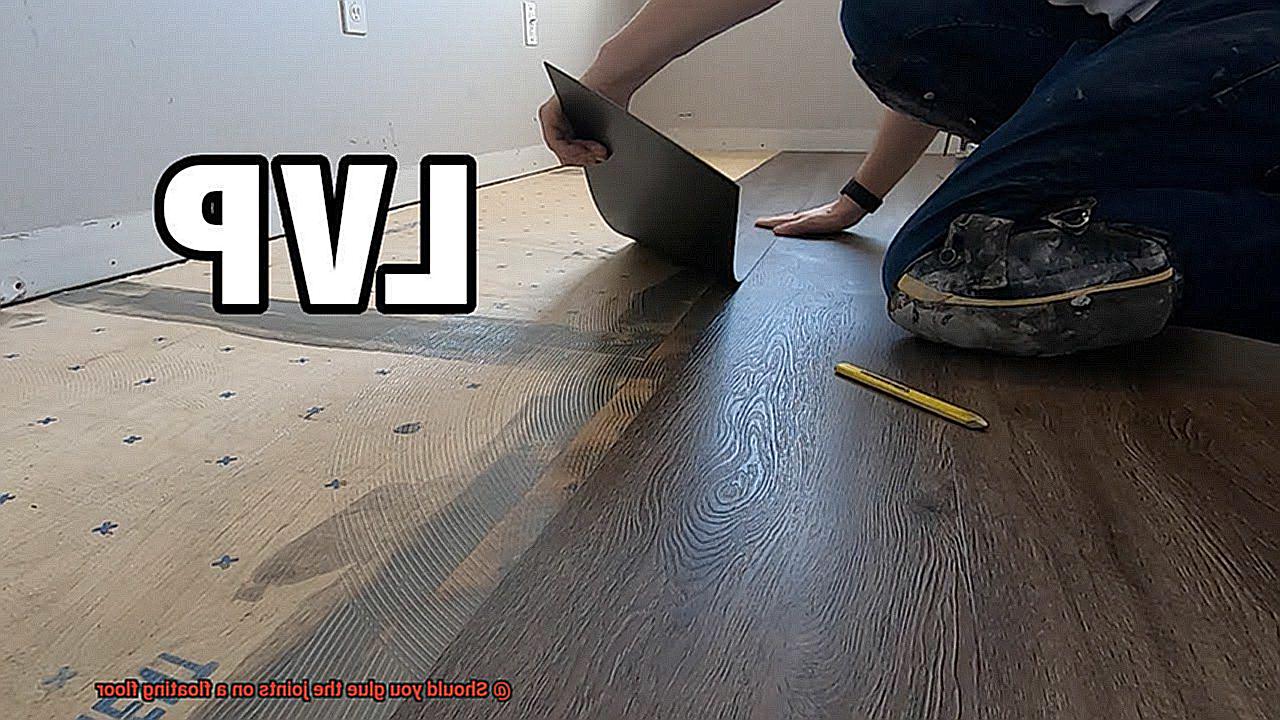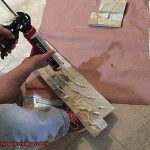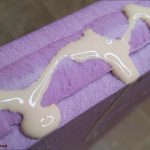Imagine this: You’ve finally made the decision to upgrade your home with a floating floor. You’ve spent countless hours researching and selecting the perfect material and color, and now it’s time for installation. But as you begin the process, you’re faced with a crucial choice- should you glue the joints or not?
This is a common dilemma that many homeowners encounter when installing a floating floor. On one hand, gluing the joints can provide added stability and prevent any unwanted movement or shifting. On the other hand, it can make it more difficult to replace individual planks if necessary.
So, what’s the verdict? Should you glue the joints on a floating floor? In this blog post, we’ll explore both sides of the debate and help you make an informed decision based on your specific needs.
We’ll delve into why gluing may be advantageous in certain situations, such as high traffic areas or uneven subfloors. We’ll also explain how leaving the joints unglued can offer flexibility and easier maintenance.
By the end of this post, you’ll have all the information needed to decide whether or not to glue your floating floor joints. So let’s dive in.
Types of Flooring That Require Glue
Contents
Installing new flooring is an exciting way to refresh your home’s look. With so many options available, it’s important to understand which types of flooring require glue for proper installation. Here are some common types of flooring that need adhesive:
Vinyl Flooring
Vinyl flooring, including luxury vinyl tile (LVT) and sheet vinyl, often require adhesive to hold them in place securely. This is because vinyl is a flexible material that can shift and move over time if not properly secured. The adhesive also provides a moisture barrier to protect the subfloor.
Cork Flooring
Cork flooring is known for its eco-friendliness and durability. However, due to its unique composition, cork flooring needs to be glued down to prevent any movement or shifting. The adhesive helps to keep the cork in place while still allowing some flexibility.
Linoleum Flooring
Linoleum is another eco-friendly option that requires glue for proper installation. Made from natural materials such as linseed oil, wood flour, and limestone, gluing linoleum down ensures that it stays in place and prevents any gaps or unevenness.
Engineered Hardwood Flooring
Engineered hardwood has a layer of real wood on top of a core made from high-density fiberboard (HDF). This type of flooring needs to be glued down to ensure that the planks do not move or shift over time. The adhesive acts as a bond between the HDF and subfloor.
Solid Hardwood Flooring
Solid hardwood flooring typically needs to be glued down in order to prevent movement and ensure that it stays in place over time. The adhesive also helps to reduce noise from foot traffic.
Laminate Flooring
While some types of laminate flooring can be installed without glue, others require adhesive to keep the planks in place and prevent shifting over time. This is especially important in high-traffic areas where the floors may experience more wear and tear.
In conclusion, understanding which types of flooring require glue is essential for proper installation and maintenance. Always refer to the manufacturer’s installation instructions and work with a professional installer if needed.
Factors to Consider Before Gluing the Joints
When it comes to installing a floating floor, gluing the joints is a critical decision that can impact the durability, stability, and overall appearance of your flooring. To make an informed decision, it’s essential to consider several factors that will influence whether or not gluing the joints is necessary.
Firstly, the type of flooring material being used is a significant factor to consider. While some floating floors, such as luxury vinyl planks and engineered hardwood, are designed to be installed without adhesive, others like solid hardwood and cork require glue for proper installation. It’s crucial to know what type of flooring you have before deciding whether or not to glue the joints.
Another important consideration is the location where the flooring will be installed. For high-traffic areas or rooms prone to moisture, such as bathrooms and kitchens, gluing the joints can help prevent shifting and unsightly gaps over time. However, for low-traffic areas, gluing may not be necessary.
The condition of the subfloor also plays a role in determining whether or not gluing the joints is necessary. If the subfloor is uneven or has imperfections, using adhesive can create a more stable surface for the flooring to adhere to. Conversely, if the subfloor is smooth and level, gluing may not be necessary.
Ultimately, personal preference and budget are additional factors to consider when deciding whether or not to glue the joints. While gluing can provide added stability and durability, it does add an additional cost and time commitment to the installation process. Some homeowners may prefer the ease and simplicity of an unglued floating floor.
The Benefits of Gluing the Joints
You may be wondering if it’s worth the extra effort to glue the joints. As an expert in this field, I can confidently say that it is definitely worth it. In fact, gluing the joints on a floating floor offers a range of benefits that can make your investment in flooring well worth the cost.
First and foremost, gluing the joints will increase the stability of your flooring. No one wants to walk on wobbly or uneven surfaces, and gluing the planks together can prevent this from happening. By creating a more secure connection between the planks, you can avoid gaps forming and reduce the likelihood of movement or shifting over time.
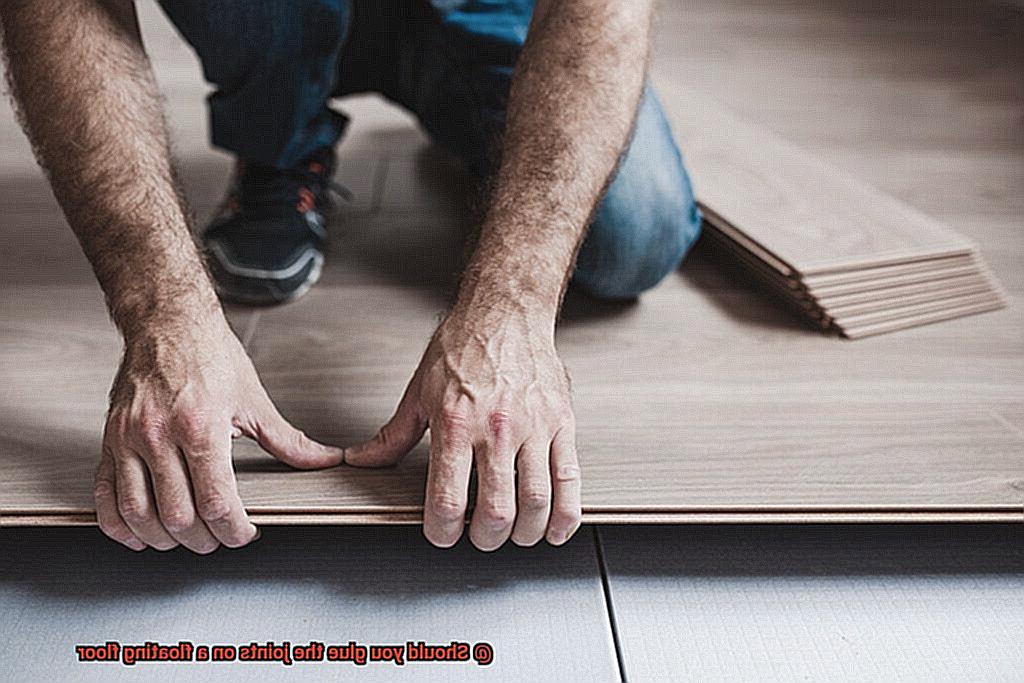
Additionally, gluing the joints can improve the moisture resistance of your flooring. Even with an underlayment, water can still seep through the gaps between planks. This can cause damage to your subfloor or even create an unpleasant odor. By gluing the planks together, you will create a tighter seal that makes it more difficult for water to penetrate the flooring. This added moisture resistance can prolong the lifespan of your flooring and save you money on repairs in the long run.
In addition to stability and moisture resistance, gluing the joints can also reduce noise and vibration. Floating floors can sometimes produce a hollow sound when walked on, which can be distracting or annoying. Gluing the planks together can help reduce this noise level and make your floor feel more solid underfoot. This is especially important if you have a busy household or live in an apartment building with neighbors below.
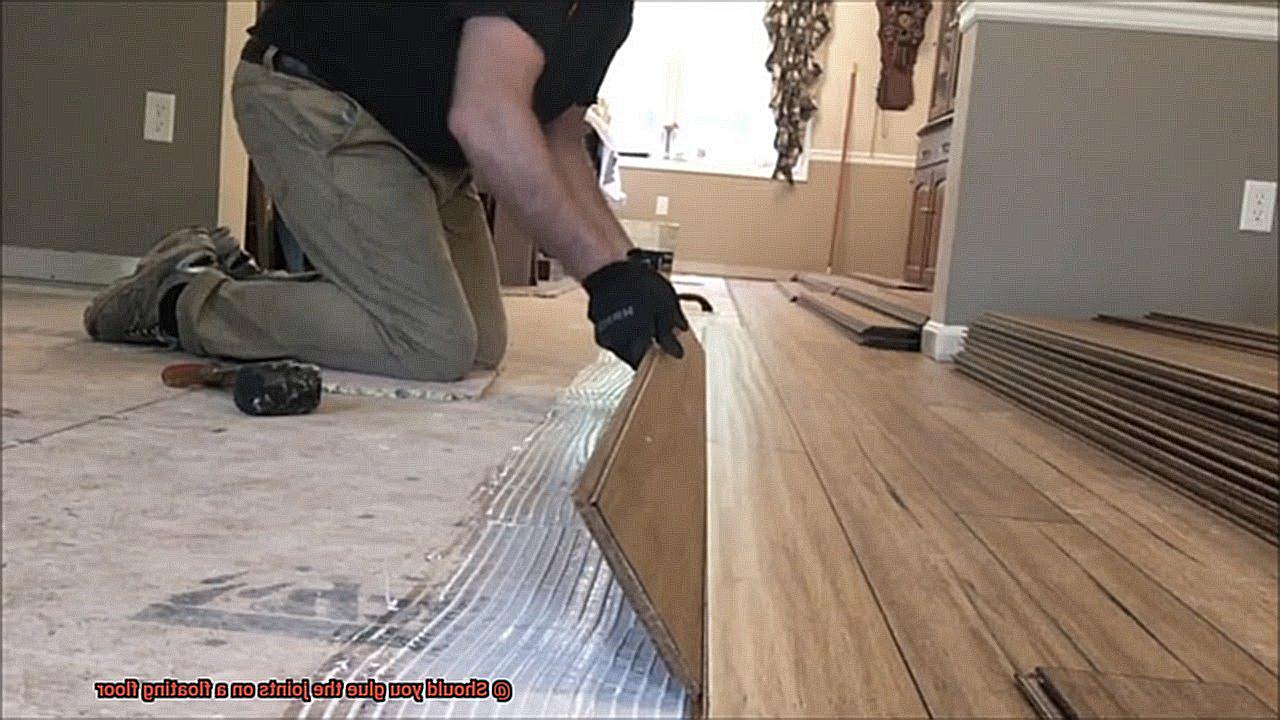
Finally, gluing the joints can increase the durability of your flooring. By preventing gaps from forming and reducing shifting and movement, you can help prolong the life of your floating floor. This added durability is especially important if you have young children or pets who are likely to cause wear and tear over time.
The Disadvantages of Gluing the Joints
Gluing the joints on a floating floor is a common practice, but it is not always the best option. As an expert in the flooring industry, I have identified several disadvantages that you should consider before making a decision.
One of the most significant drawbacks is that glued joints can be challenging to replace or repair. If a section of your floor becomes damaged, you may need to remove and replace the entire floating floor, which can be time-consuming and expensive. This hassle can be avoided by opting for a different installation method.
Gluing the joints can also make the floor less flexible, which can lead to buckling or warping over time, especially in areas with high foot traffic or heavy furniture. The movement of floating floors is essential to their design, and gluing the joints restricts this movement, leading to potential damage and costly repairs.
Moreover, gluing the joints can make the installation process more complicated and time-consuming. It requires extra preparation and precision during installation, as any mistakes can be difficult to correct later on. Additionally, some types of adhesives emit strong fumes during installation which can be harmful if proper ventilation isn’t provided.
Lastly, gluing the joints may not always be necessary or beneficial. In some cases, thicker or wider planks may not require glue to provide added stability or durability. Furthermore, floating floors with click-lock systems are designed to stay in place without glue and may even perform better without it.
Tips for Installing a Floating Floor with Glue
Installing a floating floor with glue is a great option for those who want a secure and stable flooring surface. However, it’s important to follow some tips to ensure that the installation is successful. Here are five sub-sections to help you get started:
Choose the Right Adhesive
Choosing the right adhesive is crucial when installing a floating floor with glue. It’s essential to read the manufacturer’s instructions carefully and use the correct adhesive for your specific flooring material. Some adhesives are designed specifically for use with certain types of flooring, so it’s important to choose wisely.
Clean and Level the Subfloor
Before applying the adhesive, make sure that the subfloor is clean and level. Any debris or unevenness can affect the adhesion of the glue and cause problems later on. Take time to sweep, vacuum, and level the subfloor before beginning the installation process.
Apply Adhesive Evenly
When applying adhesive, it’s important to apply it evenly and consistently throughout the installation process. This will help to ensure that the flooring stays in place and doesn’t shift or move over time. It’s also important to work in small sections at a time, rather than trying to cover too much ground at once.
Use Spacers
As you install each row, use spacers between the wall and the planks to maintain a consistent gap for expansion and contraction. This will also help prevent any buckling or warping of the floor over time. Be sure to follow the manufacturer’s recommendations for spacing.
Allow Time for Drying
Finally, it’s essential to allow plenty of time for the adhesive to dry before walking on or using the flooring. This may take several hours or even overnight, depending on the type of glue used and the humidity levels in your home. Rushing this step can lead to a less-than-perfect installation.
Alternatives to Gluing the Joints
As an expert in this field, I’ve researched and compiled a list of alternatives that can be just as effective.
First up, the click-lock system. This involves interlocking the planks together without using any glue. Not only is it easy to install, but it also allows for disassembly if needed. So, if you change your mind about your flooring down the line, you can easily take it apart and reuse it elsewhere. Plus, click-lock systems come in a variety of styles and materials, making it easy to find one that suits your aesthetic preferences.
Another alternative is using a floating floor underlayment. This foam or cork layer goes underneath the flooring and acts as a cushioning agent. It helps to reduce moisture buildup and absorb sound, while also providing an extra layer of insulation. Plus, it’s eco-friendly. With underlayment options ranging from basic foam to high-performance cork, you can choose the level of cushioning and insulation that best meets your needs.
Lastly, some manufacturers offer pre-glued planks or tiles that don’t require any additional glue. These products come with a pre-applied adhesive on the edges, making installation simple and hassle-free. This option is particularly beneficial for those who are short on time or want to avoid the mess and potential health hazards associated with traditional glues.
It’s important to note that whether or not to glue the joints on a floating floor will depend on various factors including the type of flooring being used, the subfloor, and the overall installation method. However, knowing that there are alternatives available if gluing is not desired or necessary can give you peace of mind during your flooring project.
cq_V6AZP77Y” >
Conclusion
To glue or not to glue? That is the question when it comes to floating floors. The answer depends on various factors, such as the type of flooring material, location, subfloor condition, personal preference, and budget. While gluing can add stability and durability to your flooring, it also has some drawbacks. Gluing makes the floor less flexible and challenging to replace or repair.
Before making a decision, consider both sides of the debate. If you choose to glue your floating floor joints, choose an adhesive that’s suitable for your specific flooring material. Clean and level the subfloor before applying adhesive evenly. On the other hand, if you prefer not to use glue, there are alternatives like click-lock systems that allow for disassembly if needed. You can also use a floating floor underlayment for cushioning and insulation or pre-glued planks or tiles that don’t require additional glue.
Proper installation and maintenance are essential to keep your floating floor in top condition. Always refer to the manufacturer’s installation instructions and work with a professional installer if needed. Understanding which types of flooring require glue is crucial for successful installation.
In conclusion, whether or not you should glue the joints on a floating floor is a personal decision based on several factors.

